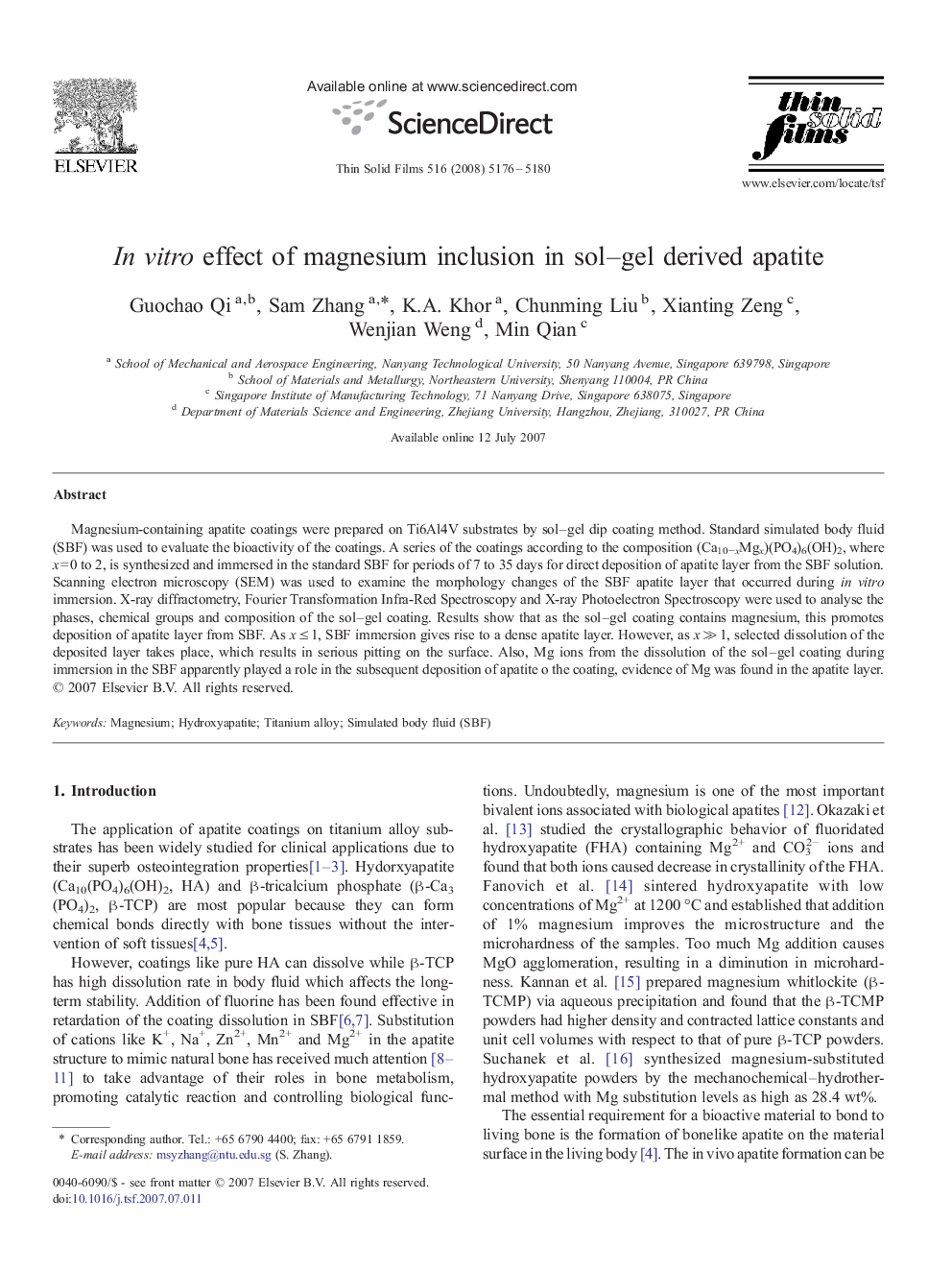| Article ID | Journal | Published Year | Pages | File Type |
|---|---|---|---|---|
| 1674915 | Thin Solid Films | 2008 | 5 Pages |
Magnesium-containing apatite coatings were prepared on Ti6Al4V substrates by sol–gel dip coating method. Standard simulated body fluid (SBF) was used to evaluate the bioactivity of the coatings. A series of the coatings according to the composition (Ca10−xMgx)(PO4)6(OH)2, where x = 0 to 2, is synthesized and immersed in the standard SBF for periods of 7 to 35 days for direct deposition of apatite layer from the SBF solution. Scanning electron microscopy (SEM) was used to examine the morphology changes of the SBF apatite layer that occurred during in vitro immersion. X-ray diffractometry, Fourier Transformation Infra-Red Spectroscopy and X-ray Photoelectron Spectroscopy were used to analyse the phases, chemical groups and composition of the sol–gel coating. Results show that as the sol–gel coating contains magnesium, this promotes deposition of apatite layer from SBF. As x ≤ 1, SBF immersion gives rise to a dense apatite layer. However, as x ≫ 1, selected dissolution of the deposited layer takes place, which results in serious pitting on the surface. Also, Mg ions from the dissolution of the sol–gel coating during immersion in the SBF apparently played a role in the subsequent deposition of apatite o the coating, evidence of Mg was found in the apatite layer.
